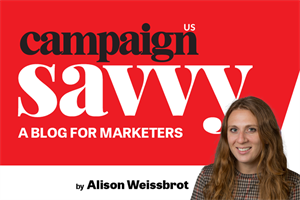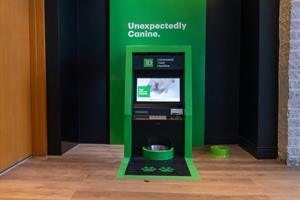A study from the Association of National Advertisers (ANA) made headlines last year when it found that the programmatic media ecosystem is riddled with waste and potential fraud. The Programmatic Media Supply Chain Transparency Study found that $22 billion dollars of the $88 billion spent on open web programmatic media is wasted. The average campaign runs on 44,000 websites, and nearly one-quarter of ads are not seen by real people.
It’s time for Programmatic 3.0, a new system built on complete transparency that can ensure not just that real people see a brand’s messages but that the right people see it. A system in which 100% of brand ad dollars go to working media.
Campaign US recently partnered with performance CTV ad platform Blockboard to bring together experts in marketing, advertising and media to discuss the future of programmatic advertising and the importance of transparency. The closed-door discussion was hosted by Campaign US editor-in-chief Alison Weissbrot and featured Blockboard cofounder and CEO Matt Wasserlauf.
Other invited experts included:
- Kamran Asghar, CEO, cofounder, Crossmedia US
- Carl Fremont, CEO, Quigley-Simpson
- Ben Glanzman, VP, director of growth - Planet Fitness, Zimmerman Advertising
- Cheryl Guerin, EVP, global brand strategy and innovation, Mastercard
- Ibra Morales, co-CEO, Patient Journey
- Stephanie Mota, VP, director of media services - Planet Fitness, Zimmerman Advertising
- John Osborn, director, Ad Net Zero US
- Jack Politis, VP, programmatic, Assembly Global
- Carlos Quintero, EVP, integrated marketing and communications for Latin America and the Caribbean, Mastercard
- Ashley Rappaport, director of sales, East, Blockboard
During the lively conversation, participants discussed how brands can take a more active role in managing their programmatic spending and demanding greater visibility across the entire supply chain. A few themes emerged.
The Industry needs a greater sense of urgency
The ANA report was an important wake-up call for many in the industry, but participants felt that many are still not understanding the scope of the problem or the urgent need for action.
“The urgency in fraud is that AI can turn that $22 billion into $22 trillion quickly, and we want to get ahead of that,” Wasserlauf said. He went on to explain that Blockboard’s system pre-verifies each ad call from premium CTV and online video providers to give brands their target reach, frequency and real business outcomes.
Quintero at Mastercard explained that the stakes are high because false advertising can negatively impact a brand. “By going into this fraudulent environment, you might lose control of where your brand shows up with the money that you're putting in,” he said. Part of the challenge of getting brands to take action is that they “don’t understand the problem, and the solution seems cumbersome,” he added.
The industry needs to focus on new incentives
There was agreement among the participants that the current environment, which concentrates on KPIs and prioritizes cost over quality, is perpetuating the problem. Only by examining the entire supply chain and demanding to know where the money goes will buyers be able to make the most of their advertising spend.
“The focus is on getting the leads and getting the sales and leaving the industry to sort out everything else,” Fremont of Quigley-Simpson explained. Glanzman from Zimmerman Advertising put it this way, “If we constantly focus on a race to the bottom in terms of driving efficiency and buying tonnage, then we’re removing any qualitative analysis on those media. Fraud will follow the dollars, and it's easy for bad actors to capitalize on an impression-based buying model.”
Asghar at Crossmedia added, “We have to get rid of these silos and focus on the orchestration of all of the money that's being spent on delivering growth for the company.”
The industry needs a standard measurement
While Nielsen measures the effectiveness and reach of content viewed within the TV industry, there is not yet an agreed-upon third-party auditor of the digital media ecosystem. As a result, a lot of marketers are paying for advertising of little value, including false clicks and impressions, filler content and brand spoofing.
Wasserlauf pointed out that data from ad tech vendors tends to highlight reach, frequency and impressions rather than outcomes and performance. “Brands have their metrics that come from the leaders in the space — the Googles, the Metas, the trade desks — and it looks good to them. When you want to see results, you're not going to see it through the report you get from Google. They're going to give you the impressions you pay for,” he explained. “When you are ready to lean in and understand what you're paying for, there are solutions out there,” he added.
“If we want compliance, then the ANA should come up with a way,” Fremont suggested. “The burden then gets shared by agencies, tech companies and the brands to figure this stuff out themselves.” Politis of Assembly Global added that a universal currency would help align brands and ensure that buys equate to business outcomes.
Osborn of Ad Net Zero, which works to reduce carbon emission in advertising, also added that the priority should be “to clean the media ecosystem up from a consistent measurement standpoint, but also best practices,” which the organization is working on with GARM and other organizations including the ANA, 4A’s and IAB, among others.
The industry needs to work together toward a solution
A recurring theme throughout the discussion was the sense that the industry continues to operate in silos and that a lack of transparency between these silos — or worse, a sense that they blame one another — is allowing waste to continue. Participants agreed that any long-lasting solution would require collective actions across various touchpoints.
Mota from Zimmerman Advertising brought her own experience of a lack of transparency into the conversation, noting, “Sometimes you have clients that are restricted from sharing sales data.
While participants believe that a long-term solution will require industry-wide action, there was agreement that much of this had to start with brands because, as Glanzman noted, “the money flows from the brand to the agencies.” Brands can start by accessing the data and educating themselves. Osborn suggested that brands “Ask your agencies who they are partnering with, who their ad exchanges are, and who the ad tech companies are.”
Guerin of Mastercard felt confident that with good partners, brands can “consolidate media, get better rates, ask for brand stake, get brand safety and get sustainability. It all starts to add up into optimal choices and consolidation.”
The good news is that real change is possible. With access to more data and a consistent measurement metric, brands can optimize their spending so they can connect with real customers and get better results. As Wasserlauff put it, “We’re going to clean up this whole industry. It might take a while, but it’s ultimately going to come from the brands that really want to see what that looks like.”










